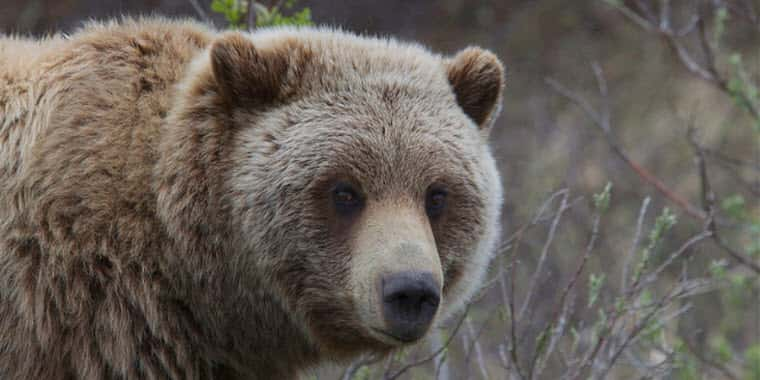HELENA, Mont. – Governor Greg Gianforte today announced the state of Montana is petitioning the U.S. Fish and Wildlife Service (FWS) to delist grizzly bears in the Northern Continental Divide Ecosystem (NCDE) in northwest Montana.
The petition to delist clearly outlines that NCDE grizzly bears are within a distinct population, have far surpassed population recovery goals and that Montana Fish, Wildlife & Parks has the structure in place to successfully take over full management of this iconic native species.
“Due to the work and sacrifice of many Montanans over decades, Montana has been successful in recovering grizzly bears in the NCDE,” Gov. Gianforte said. “With the grizzly bear recovered, keeping the species listed under the Endangered Species Act will only continue to impact communities, farmers and ranchers, and recreationists around the state. It also limits Montana’s options when it comes to dealing with conflict bears.”
“We’ve achieved the goals set for us. It’s time for the state to take over management,” the governor said.
Grizzly bears were listed as threatened under the Endangered Species Act in 1975. At the time the population of grizzly bears in the lower 48 was estimated to be in the hundreds. Today the population in the NCDE alone is estimated at approximately 1,100 bears. In accordance with the NCDE Conservation Strategy and administrative rule, FWP is committed to keeping a viable and healthy population. In 2018, the Montana Fish and Wildlife Commission approved a population objective for the ecosystem to maintain a population size above 800 bears with at least 90 percent certainty. Effectively, this would mean managing for a population of approximately 1,000 grizzly bears.
Senator Steve Daines applauded the petition saying, “The science is clear. The grizzly bear has recovered in the Northern Continental Divide Ecosystem. We should celebrate this accomplishment, delist the grizzly bear, and return management back to the state as the law intends. I fully support and am thankful for Governor Gianforte’s leadership on this issue and implore the Biden Administration to follow the science in reviewing the petition and work with Montana to transition management back to the state.”
In March of 2021, Daines introduced the “Grizzly Bear State Management Act of 2021,” which would remove grizzly bears in the Greater Yellowstone Ecosystem from the Endangered Species List, prevent further obstruction in the courts, and return management of the species back to the hands of Montanans. Daines has continued to push Interior Secretary Deb Haaland to delist the grizzly and has asked Senate Environment and Public Works Committee Chairman Tom Carper (D-Del.) to take action on his bill.
As grizzly bear numbers have grown, their distribution has expanded, particularly in the prairie areas east of the Rocky Mountain Front, where they haven’t been in more than a century. This expansion has led to increased conflicts with communities, livestock producers and landowners.
“We worked on grizzly bear recovery for decades. We were successful and switched to a focus on conflict management years ago,” FWP director Hank Worsech said. “We’ve shown the ability to manage bears, protect their habitat and population numbers. It’s time for us to have full authority for grizzly bears in Montana.”
Beyond seeking to delist grizzly bears in the NCDE, the petition also asks the FWS to designate the NCDE bears as a distinct population segment (DPS.) In doing so, the petition also seeks to expand the DPS well into eastern Montana. This would allow for the delisting of grizzly bears across most of the northern half of the state.
Under federal rules, the FWS has 90 days for their initial response to Montana’s petition.
Upon delisting, state laws and administrative rules, already in place, become the primary regulatory and legal mechanisms guiding management.
FWP monitors grizzly bears in the NCDE with the best available science and a team of dedicated specialists. FWP established a monitoring program in 2004 that tracks the survival and reproductive rates of radio-marked grizzly bears throughout the ecosystem. Every known or probable grizzly bear mortality is documented. This long-term program works in cooperation with other state, federal, and tribal agencies.
Although grizzly bears in the lower 48 states have remained under the jurisdiction of the U.S. Fish and Wildlife Service, much of the day-to-day management is done by FWP’s specialists who work with landowners and the general public to address conflicts and increase safety and education in bear country.



So thankful this is moving forward. So needed for the safety of those living in our small towns and rural communities.